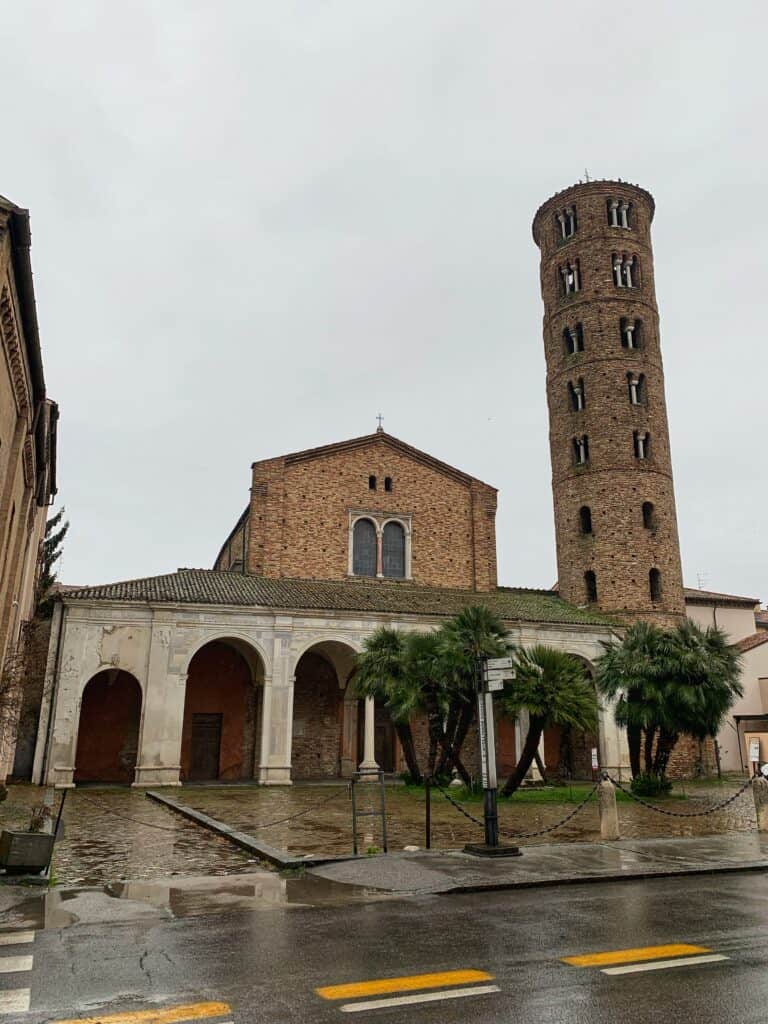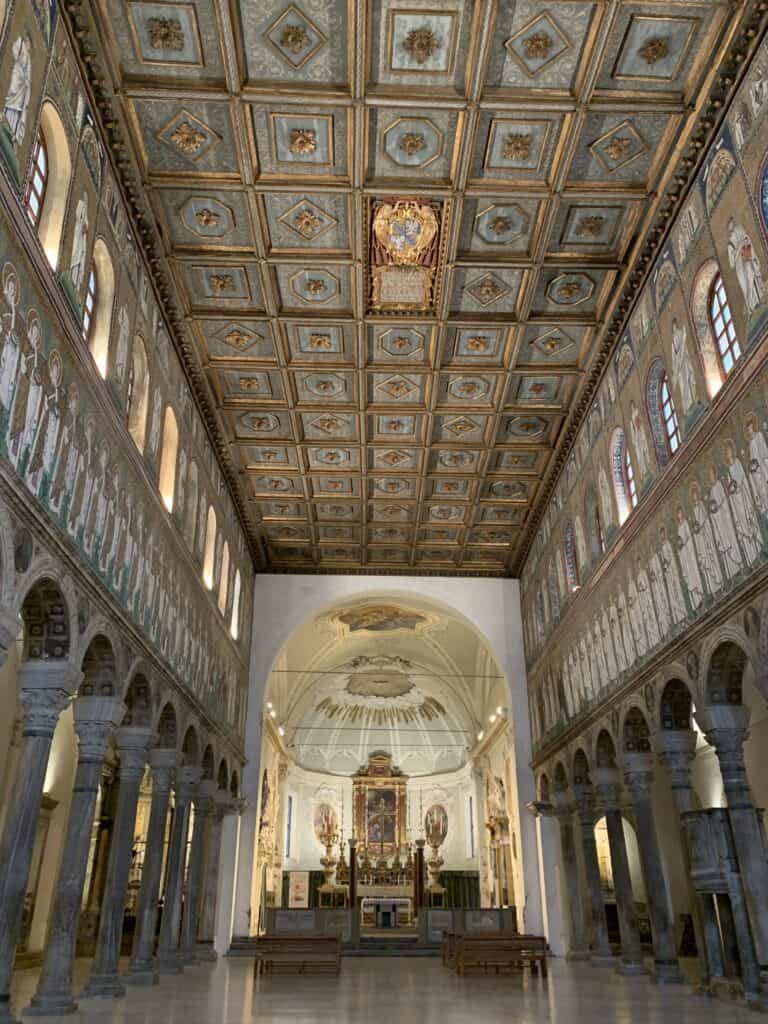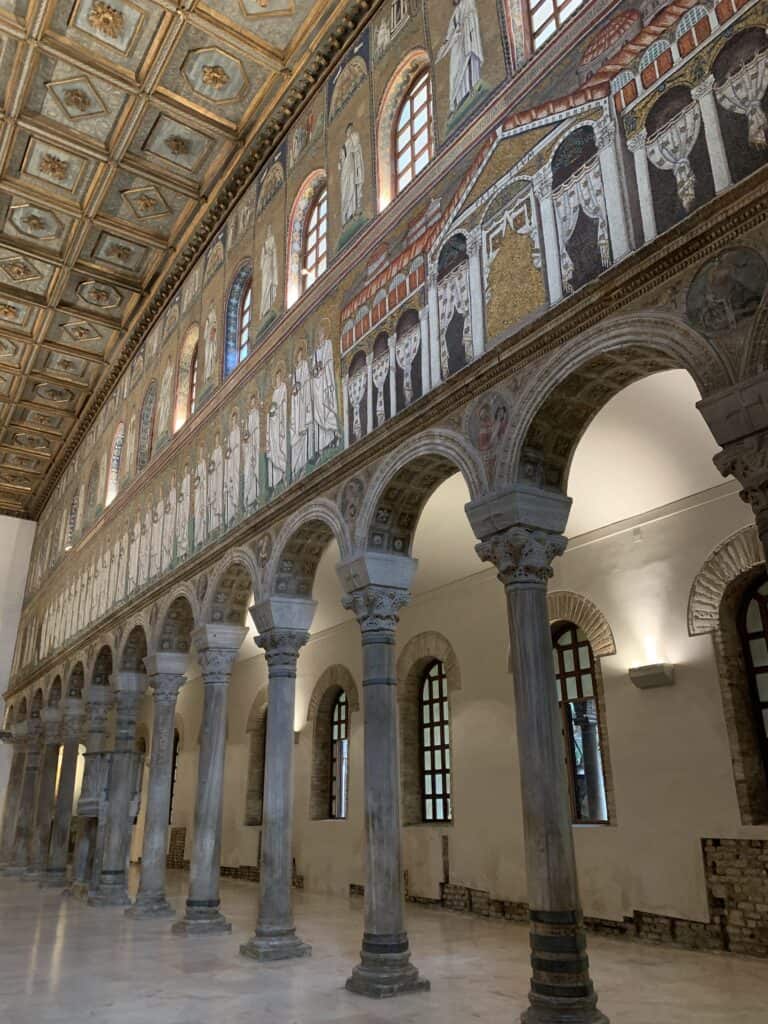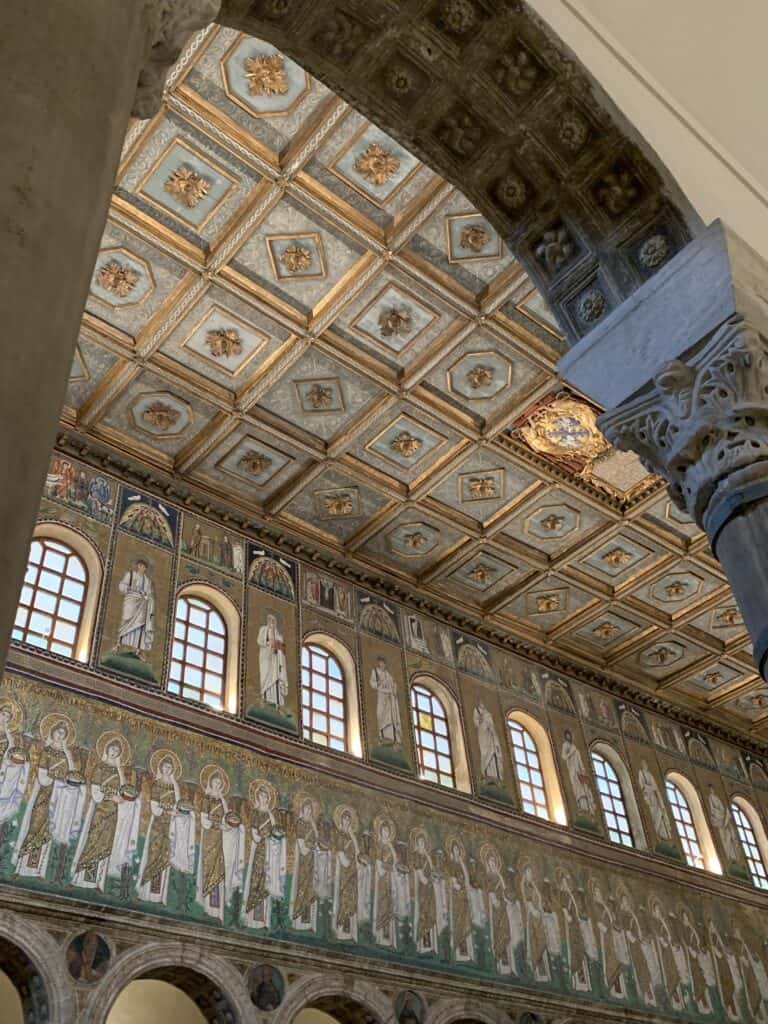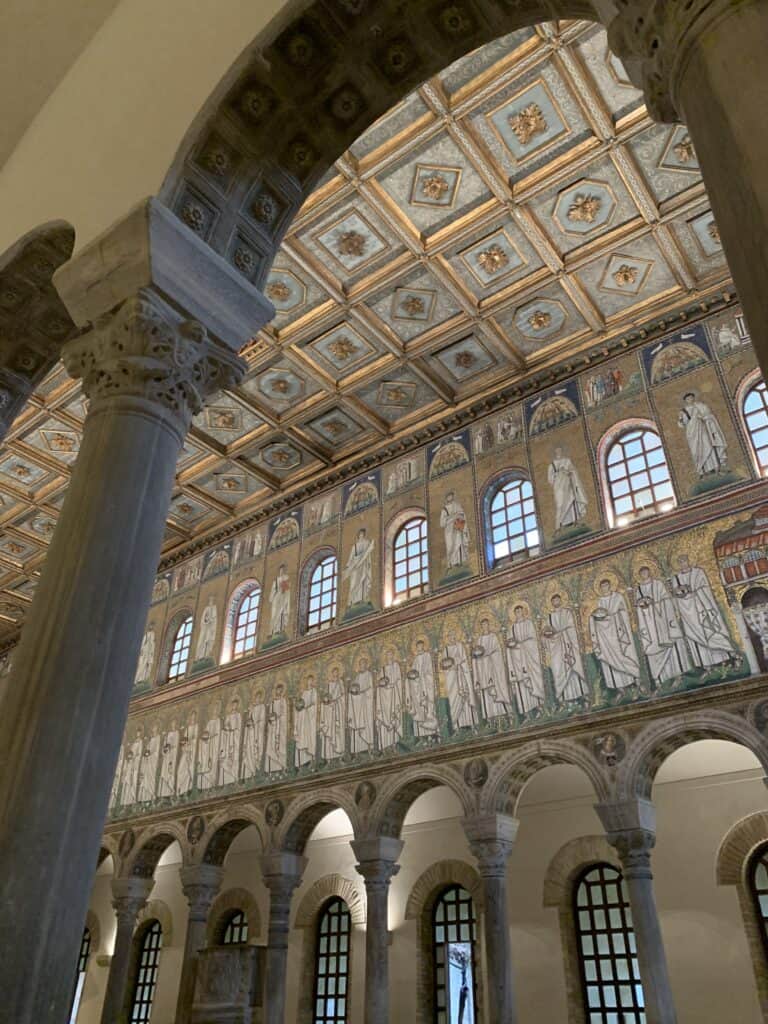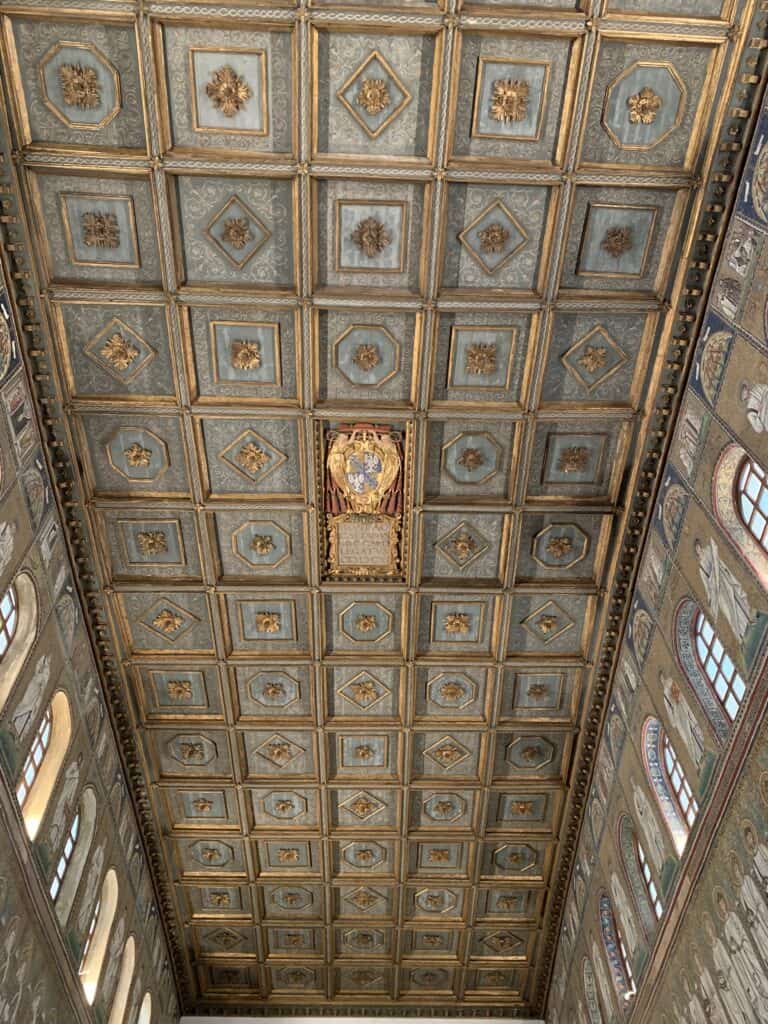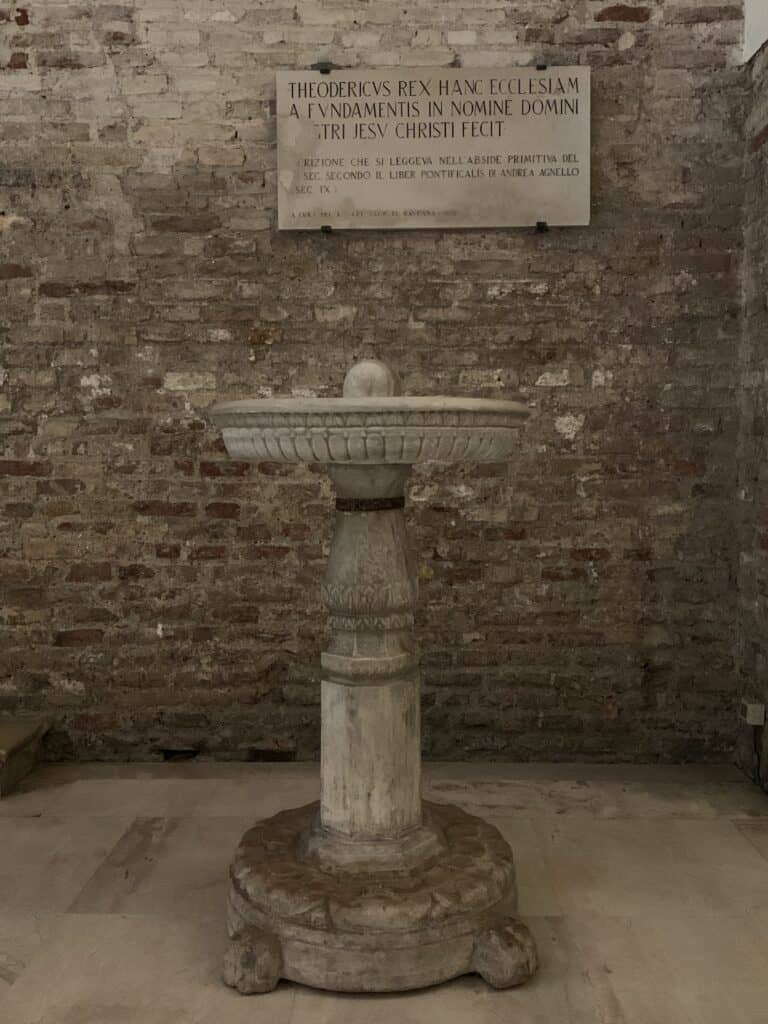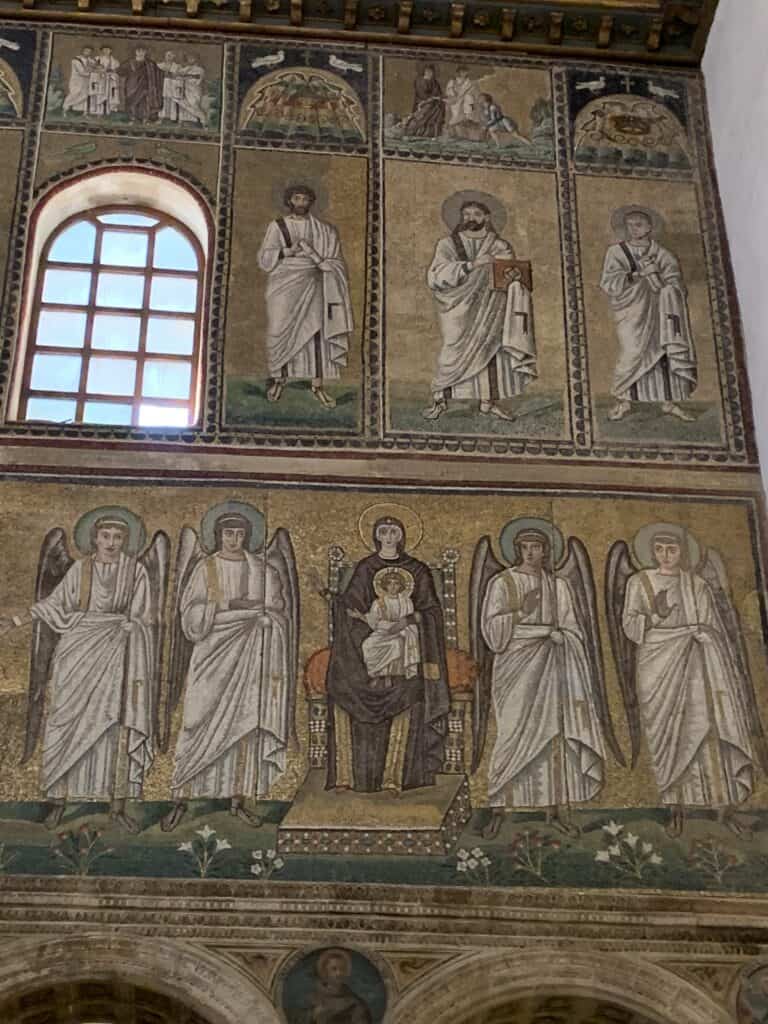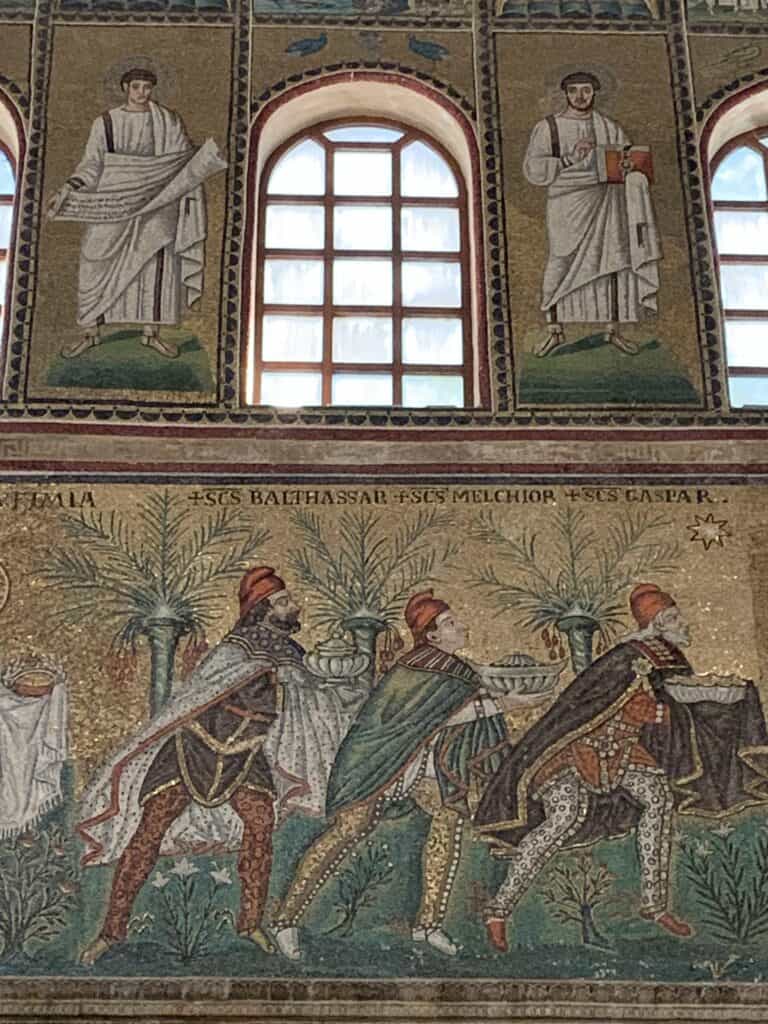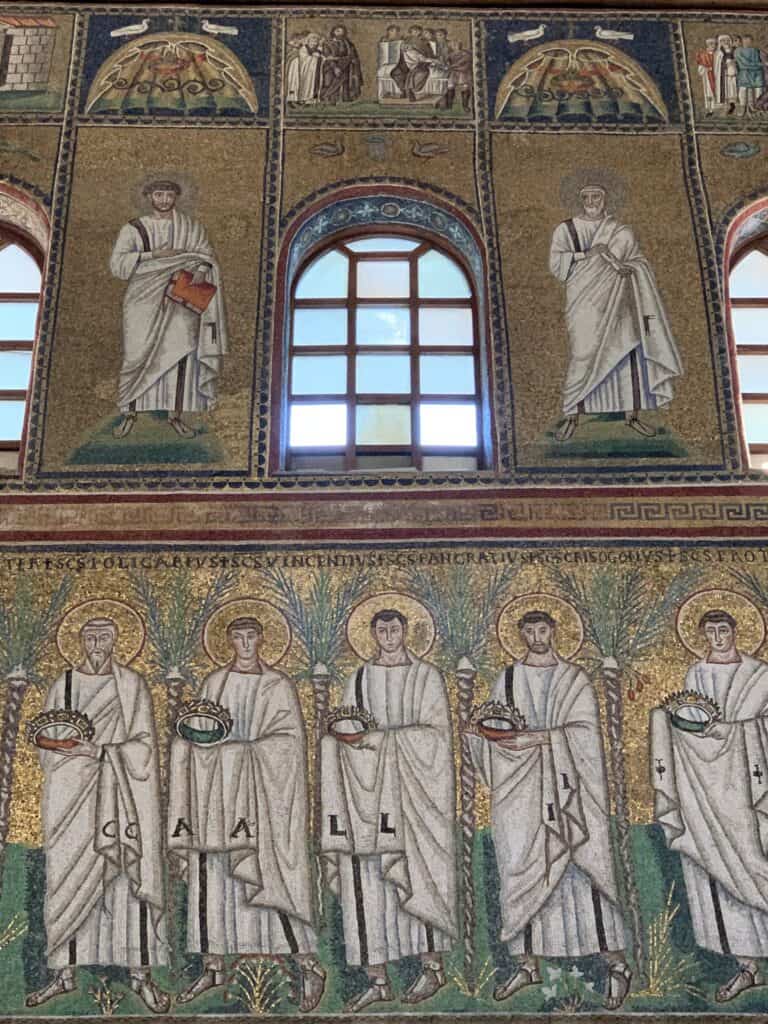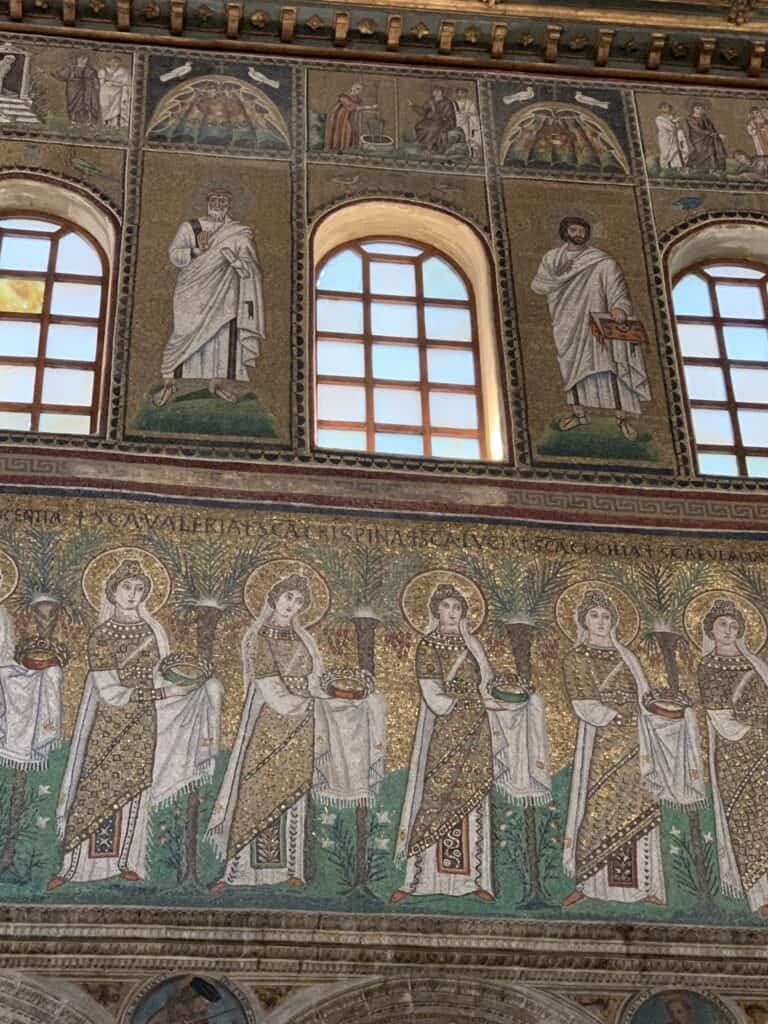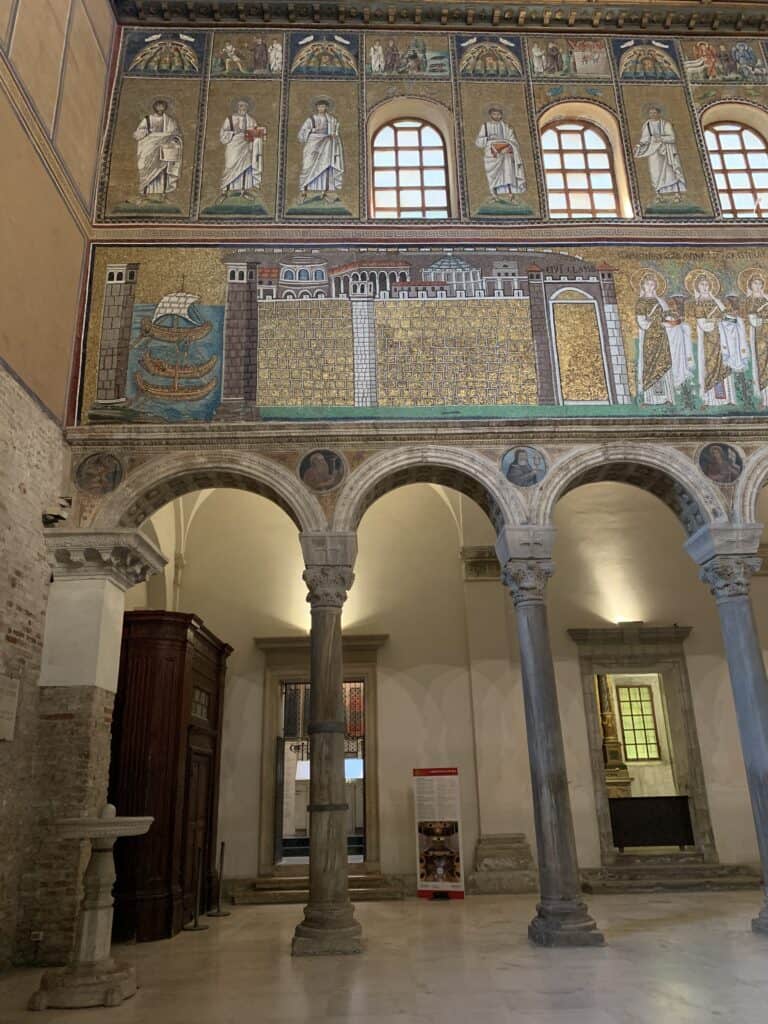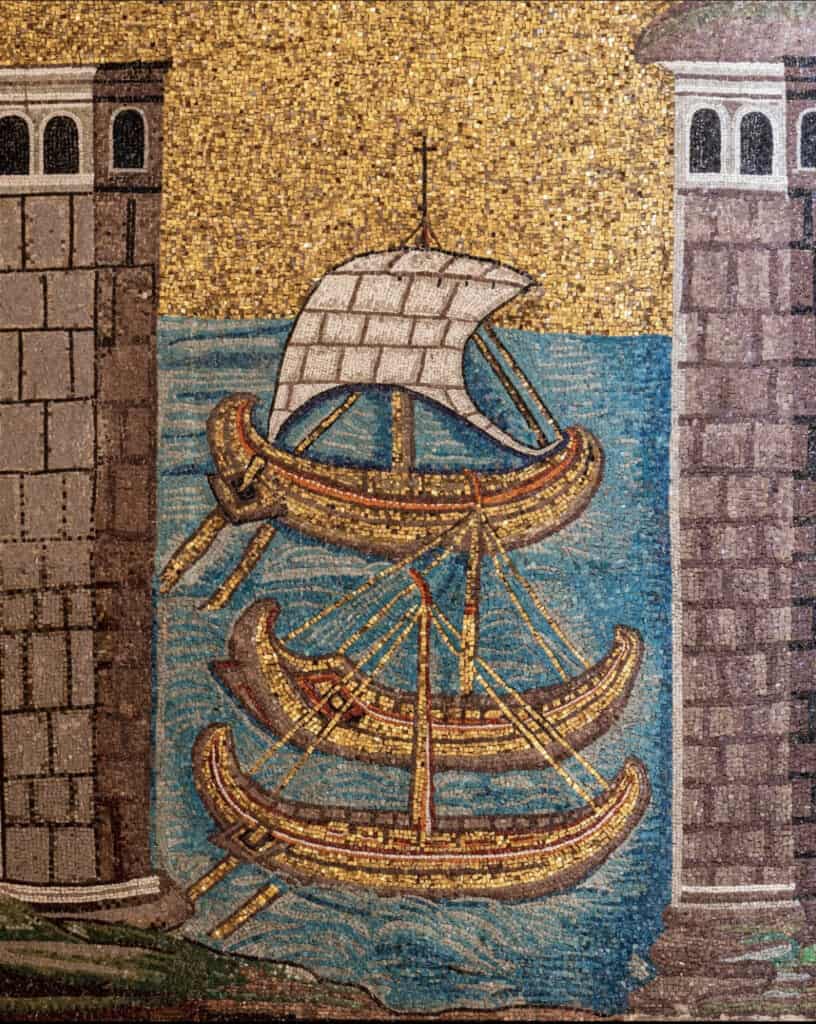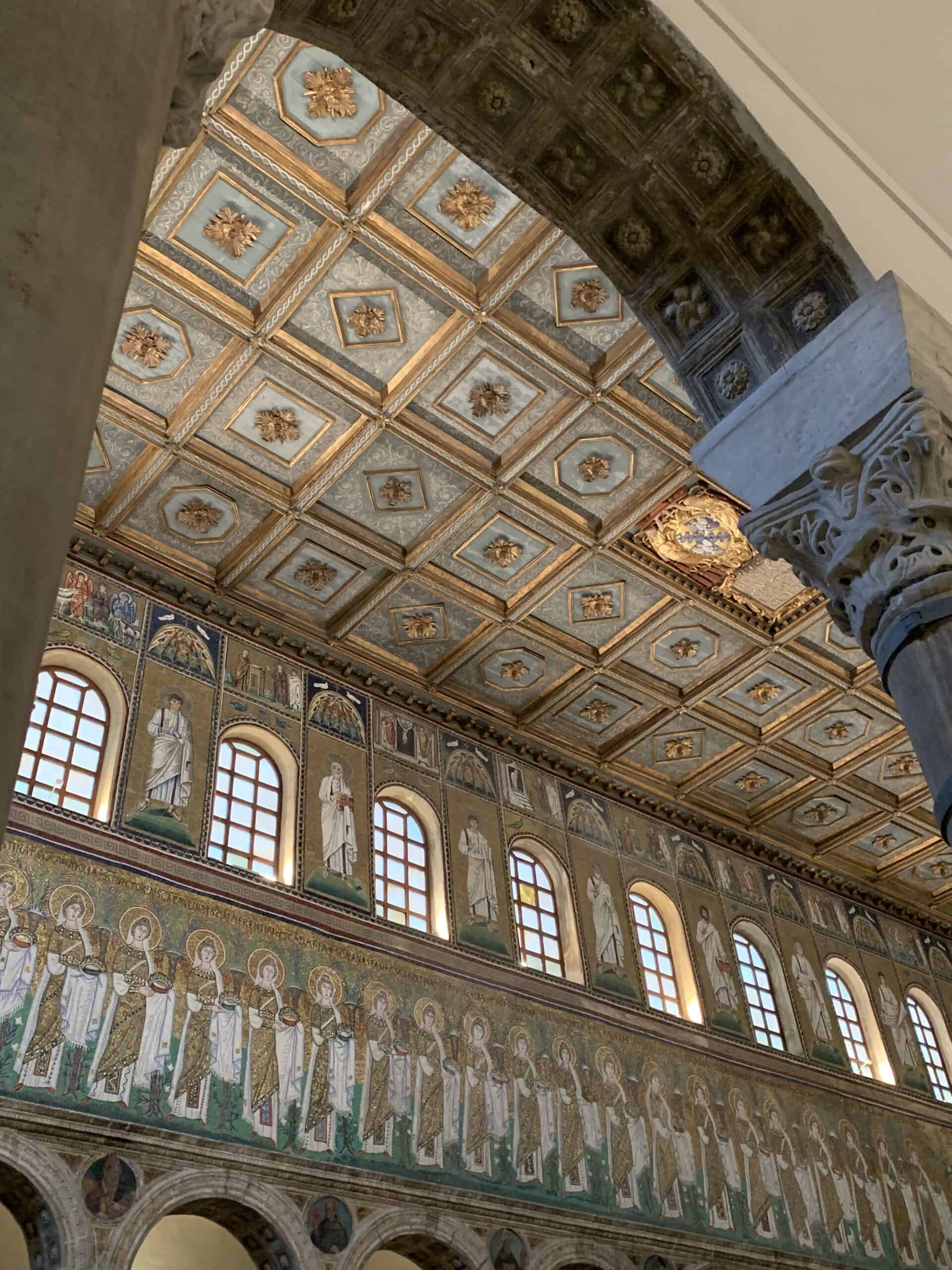
The Basilica of Sant’Apollinare Nuovo was built at the behest of Theodoric in 505, and represented at the time an important place of Arian culture called Domini Nostri Jesu Christi. This was also the palatine church of Theodoric, and when the city was conquered by the Byzantines in 540, Emperor Justinian donated to the Catholic Church all the buildings that belonged to the Arians.
It was thus consecrated again, this time to St. Martin of Tours, and the Arian mosaics were almost completely destroyed, but only the highest orders, depicting the Stories of Christ, the Saints and the Prophets, were saved.
From the lower end were preserved instead the views of the Port of Classe and the Palatium of Theodoric.
Around the ninth century the church assumed its current name, a period in which the relics of St Apollinare were transferred from the homonymous basilica of Sant’Apollinare in Classe.
A characteristic of the churches of Ravenna of the Roman Imperial, Ostro-Gothic and Justinian periods is the presence of mosaics inside them.
The Basilica of Sant’Apollinare Nuovo presents the largest and most important mosaic cycle relating to the New Testament among those known to date.
The central nave has walls divided into three bands of mosaic decorations: the highest is dedicated to scenes from the life of Christ, and can boast works such as Christ dividing the sheep from the kids, the Separation of the good and the bad and the Last Supper; the middle band is instead composed of figures of Saints and Prophets.
In the lower band there is the representation of the Palace of Theodoric while on the opposite wall there is the mosaic of the Port of Classe, at the time the largest port in the whole Adriatic.
Continuing to the right are stylized buildings such as a basilica, an amphitheater, a portico and a civil building covered by a conical roof. Also, in the lower band are depicted the processions of Holy Martyrs and Holy Virgins, carried out during the Byzantine rule.
The apse is instead devoid of mosaics as it was destroyed by an earthquake and was rebuilt later.
The Basilica of Sant’Apollinare Nuovo was included in the list of Italian World Heritage Sites by UNESCO in 1996.
I thank the Opera Religion of the Diocese of Ravenna for its hospitality and availability.

